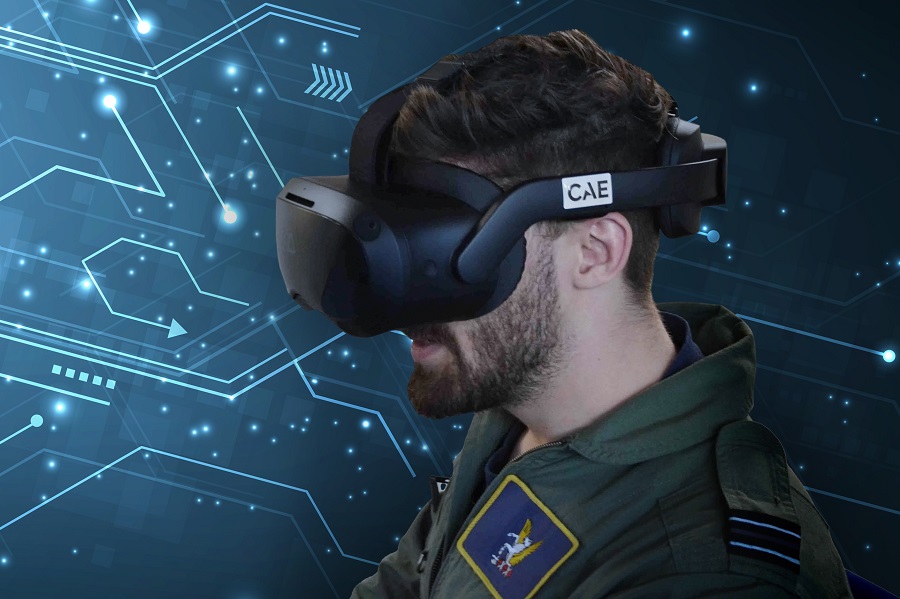CAE has successfully delivered an Embedded Virtual Instructor Training (EVIT) capability for the RAF and has been awarded a 3-year contract to support the 360-degree video lessons for the Puma and Chinook.
Using VR instruction allows more efficient use of airborne training time and increases entry standards for new skills. EVIT improves familiarity with the cockpit and cabin environments and increases confidence in tasks needed prior to flight.
This new capability is a collaborative effort between 28 (Army Cooperation) Squadron RAF, the Support Helicopter Simulation Delivery Team and CAE to integrate modern technology into the Operational Conversion Unit (OCU) training syllabi.
EVIT uses enhanced headset technology to deliver efficient ground-based and simulator lessons, which increases trainee knowledge and preparation for flying sorties.
Trainees receive a headset with preloaded EVIT sessions ranging from dynamic airborne instruction of dust landing techniques to hooking up underslung loads to medic preparation of a casualty in a stretcher for winch rescue from a jungle clearing.
Following a trial that began in 2020, VR headsets are now being used by all trainees, resulting in a higher quality training experience for pilots and crewmen.
Flt Lt Brett Jones, based at RAF Benson, described the technology as “excellent”. He said:“The introduction of the VR headsets on 28 (AC) Sqn has been excellent for both our trainees and instructors. The immersive environment has provided the trainees with a better understanding of what will be taught prior to the simulator/aircraft sorties and this has allowed more time to consolidate their skills.”
He added: “The virtual training has also allowed for greater standardisation across the unit.”
Implementing virtual training also reduces the carbon footprint and resource bill, while also increasing standardisation.
The 360-degree video lessons provide training media that is readily available and repeatable to the highest standard.
The materials are accessed at the trainee’s pace and are tailored to individual learning styles. In certain circumstances, the use of EVIT has replaced live training and traditional instructional methods, to optimise the learning experience while saving key equipment and personnel resources.























